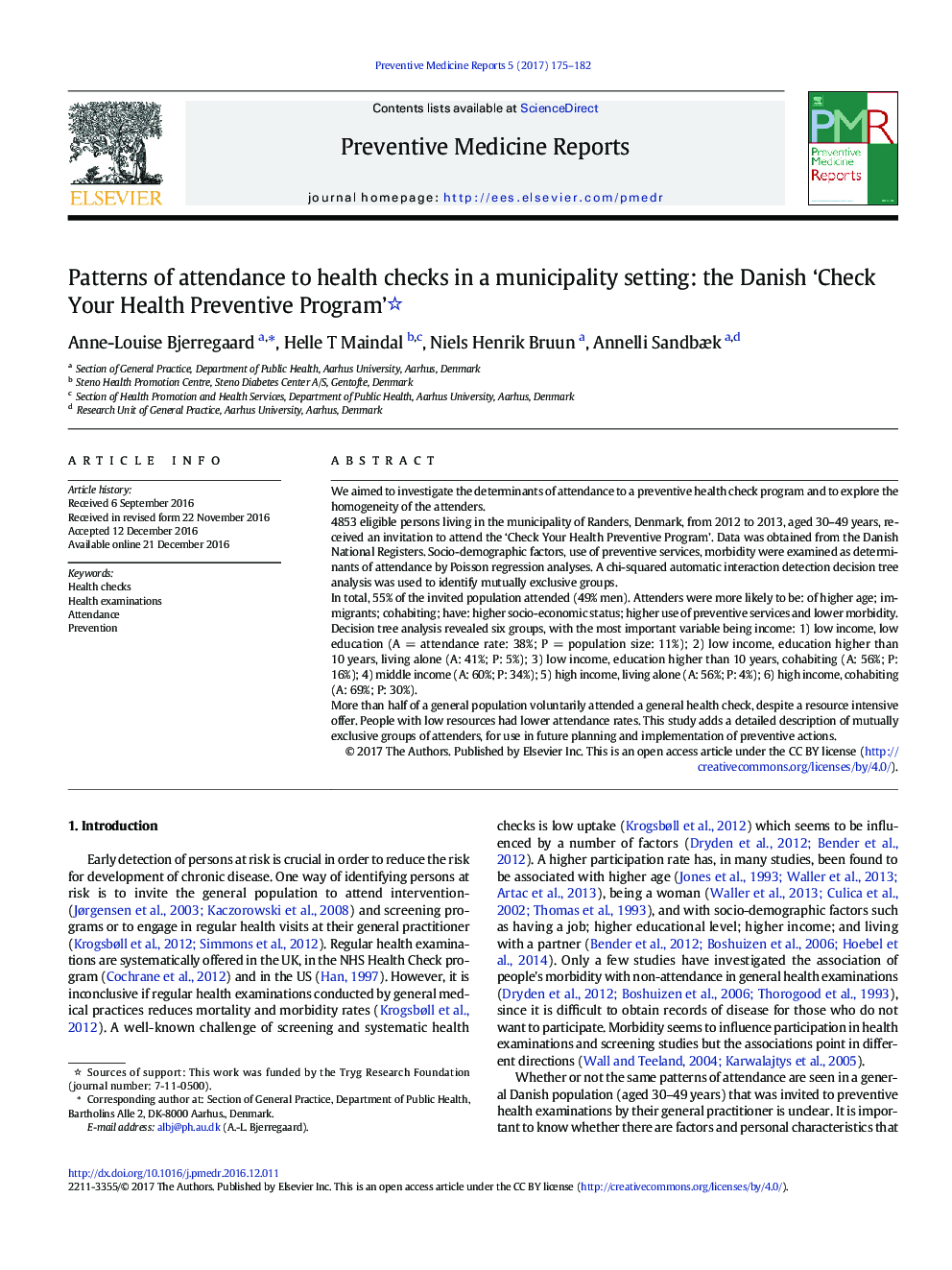| Article ID | Journal | Published Year | Pages | File Type |
|---|---|---|---|---|
| 5723768 | Preventive Medicine Reports | 2017 | 8 Pages |
â¢Attendance was determined by socio-demographic factors and preventive services use.â¢Morbidity and medication purchase was associated with lower attendance rate.â¢Decision tree analysis revealed six groups of attenders.â¢Groups with low income, educational level, living alone, had lower attendance rate.â¢Targeted recruitment strategies should be considered as a way to increase attendance.
We aimed to investigate the determinants of attendance to a preventive health check program and to explore the homogeneity of the attenders.4853 eligible persons living in the municipality of Randers, Denmark, from 2012 to 2013, aged 30-49Â years, received an invitation to attend the 'Check Your Health Preventive Program'. Data was obtained from the Danish National Registers. Socio-demographic factors, use of preventive services, morbidity were examined as determinants of attendance by Poisson regression analyses. A chi-squared automatic interaction detection decision tree analysis was used to identify mutually exclusive groups.In total, 55% of the invited population attended (49% men). Attenders were more likely to be: of higher age; immigrants; cohabiting; have: higher socio-economic status; higher use of preventive services and lower morbidity. Decision tree analysis revealed six groups, with the most important variable being income: 1) low income, low education (AÂ =Â attendance rate: 38%; PÂ =Â population size: 11%); 2) low income, education higher than 10Â years, living alone (A: 41%; P: 5%); 3) low income, education higher than 10Â years, cohabiting (A: 56%; P: 16%); 4) middle income (A: 60%; P: 34%); 5) high income, living alone (A: 56%; P: 4%); 6) high income, cohabiting (A: 69%; P: 30%).More than half of a general population voluntarily attended a general health check, despite a resource intensive offer. People with low resources had lower attendance rates. This study adds a detailed description of mutually exclusive groups of attenders, for use in future planning and implementation of preventive actions.
